
Tactical recognition flash
Encyclopedia

Royal Navy
The Royal Navy is the naval warfare service branch of the British Armed Forces. Founded in the 16th century, it is the oldest service branch and is known as the Senior Service...
, British Army
British Army
The British Army is the land warfare branch of Her Majesty's Armed Forces in the United Kingdom. It came into being with the unification of the Kingdom of England and Scotland into the Kingdom of Great Britain in 1707. The new British Army incorporated Regiments that had already existed in England...
and Royal Air Force
Royal Air Force
The Royal Air Force is the aerial warfare service branch of the British Armed Forces. Formed on 1 April 1918, it is the oldest independent air force in the world...
to distinguish their Regiment or Corps in the absence of a cap badge
Cap badge
A cap badge, also known as head badge or hat badge, is a badge worn on uniform headgear and distinguishes the wearer's nationality and/or organisation. The wearing of cap badges is a convention commonly found among military and police forces, as well as uniformed civilian groups such as the Boy...
. It is similar to but distinct from the DZ Flash
DZ Flash
DZ Flash is a badge or patch worn by the Airborne forces of the British Army and all squadrons of the RAF Regiment. In RAF Regiment use these flashes distinguish between squadron, DZ stands for 'drop zone', although within the RAF Regiment only II Squadron has a parachute capability....
es worn by members of Airborne Forces. The colours of the TRF are sometimes derived from the unit's stable belt
Stable belt
A stable belt is an item of uniform used in the armed forces of the United Kingdom and other Commonwealth countries. Stable belts or similar derivatives are also worn by the armed forced of other nations such as Denmark....
.
TRFs should not be confused with formation signs or insignia, these are used to denote the formation (usually brigade or division or a higher headquarters) and are worn in addition to TRFs by a member of any regiment or corps serving in that formation.
Royal Navy
In 2007, the Royal Navy introduced a new TRF for CS95, which is the RN Corporate Logo, as found on the official RN website http://www.royalnavy.mod.uk/upload/img_400/logo1.jpg. This short lived idea was abolished in late 2008 by a decision of the Naval Service Clothing Committee, along with the large "Royal Navy" breast patch, and will be replaced in 2009 by a curved shoulder patch with the same wording.Army
Household CavalryHousehold Cavalry
The term Household Cavalry is used across the Commonwealth to describe the cavalry of the Household Divisions, a country’s most elite or historically senior military groupings or those military groupings that provide functions associated directly with the Head of state.Canada's Governor General's...

Royal Regiment of Artillery including the Royal Horse Artillery
Royal Horse Artillery
The regiments of the Royal Horse Artillery , dating from 1793, are part of the Royal Regiment of Artillery of the British Army...
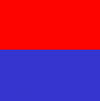
The Queen's Dragoon Guards
1st The Queen's Dragoon Guards
1st The Queen's Dragoon Guards is a cavalry regiment of the British Army. Nicknamed The Welsh Cavalry, the regiment recruits from Wales, Herefordshire, and Shropshire, and is the senior cavalry regiment, and therefore senior regiment, of the line of the British Army...

The Royal Scots Dragoon Guards
Royal Scots Dragoon Guards
The Royal Scots Dragoon Guards is a cavalry regiment of the British Army, and the senior Scottish regiment. It was formed on 2 July 1971 at Holyrood, Edinburgh, by the amalgamation of the 3rd Carabiniers The Royal Scots Dragoon Guards (Carabiniers and Greys) (SCOTS DG) is a cavalry regiment of...

The Royal Dragoon Guards

The Queen's Royal Hussars
The Queen's Royal Hussars
The Queen's Royal Hussars is the senior United Kingdom light cavalry regiment. It was formed on 1 September 1993 from the amalgamation of The Queen's Own Hussars and The Queen's Royal Irish Hussars...

9th/12th Royal Lancers
9th/12th Royal Lancers
The 9th/12th Royal Lancers is a cavalry regiment of the British Army, formed in 1960 by the amalgamation of the 9th Queen's Royal Lancers and the 12th Royal Lancers. It is currently a formation reconnaissance regiment, equipped with the Combat Vehicle Reconnaissance family of vehicles and...

The King's Royal Hussars

The Light Dragoons
The Light Dragoons
The Light Dragoons is a cavalry regiment in the British Army.It was formed in 1992 from the amalgamation of two regiments, the 13th/18th Royal Hussars and the 15th/19th The King's Royal Hussars becoming the first dragoon regiment in the British Army for over twenty years.-Present day:The Light...

The Queen's Royal Lancers
The Queen's Royal Lancers
The Queen's Royal Lancers is a cavalry regiment of the British Army. It was formed in 1993 by the amalgamation of two other regiments:*16th/5th Queen's Royal Lancers*17th/21st Lancers...

Royal Tank Regiment
Royal Tank Regiment
The Royal Tank Regiment is an armoured regiment of the British Army. It was formerly known as the Tank Corps and the Royal Tank Corps. It is part of the Royal Armoured Corps and is made up of two operational regiments, the 1st Royal Tank Regiment and the 2nd Royal Tank Regiment...
Corps of Royal Engineers

Royal Corps of Signals
Royal Corps of Signals
The Royal Corps of Signals is one of the combat support arms of the British Army...

Foot Guards
Foot Guards
-British Army:The Foot Guards are the Regular Infantry regiments of the Household Division of the British Army. There have been six regiments of foot guards, five of which still exist. The Royal Guards Reserve Regiment was a reserve formation of the Household Brigade in existence from 1900-1901...
and London Regiment
London Regiment
The London Regiment is a Territorial Army regiment in the British Army. It was first formed in 1908 in order to regiment the various Volunteer Force battalions in the newly formed County of London, each battalion having a distinctive uniform. The Volunteer Force was merged with the Yeomanry in 1908...

The Royal Regiment of Scotland
The Royal Regiment of Scotland
The Royal Regiment of Scotland is the senior and only Scottish line infantry regiment of the British Army Infantry. It consists of five regular and two territorial battalions, each formerly an individual regiment...

The Princess of Wales's Royal Regiment
Princess of Wales's Royal Regiment
"PWRR" redirects here. For the railroad with these reporting marks, see Portland and Western Railroad.The Princess of Wales's Royal Regiment is the senior English line infantry regiment of the British Army, part of the Queen's Division...

The Duke of Lancaster's Regiment

The Royal Regiment of Fusiliers
Royal Regiment of Fusiliers
The Royal Regiment of Fusiliers is an infantry regiment of the British Army, part of the Queen's Division.The regiment was formed on April 23, 1968, as part of the reforms of the army that saw the creation of the first 'large infantry regiments', by the amalgamation of the four English fusilier...

The Royal Anglian Regiment
Royal Anglian Regiment
The Royal Anglian Regiment is an infantry regiment of the British Army, part of the Queen's Division.The regiment was formed on 1 September 1964 as the first of the new large infantry regiments, through the amalgamation of the four regiments of the East Anglian Brigade.* 1st Battalion from the...



1st, 2nd, and 3rd Battalions
The Yorkshire Regiment
Yorkshire Regiment
The Yorkshire Regiment is one of the largest infantry regiments of the British Army. The regiment is currently the only line infantry or rifles unit to represent a single geographical county in the new infantry structure, serving as the county regiment of Yorkshire covering the historical areas...

The Mercian Regiment

The Royal Welsh

The Royal Irish Regiment
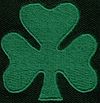
The Royal Gurkha Rifles

Rifles
The Rifles
The Rifles is the largest regiment of the British Army. Formed in 2007, it consists of five regular and two territorial battalions, plus a number of companies in other TA battalions, Each battalion of the Rifles was formerly an individual battalion of one of the two large regiments of the Light...

Army Air Corps
Royal Logistic Corps
Royal Logistic Corps
The Royal Logistic Corps provides logistic support functions to the British Army. It is the largest Corps in the Army, comprising around 17% of its strength...

Royal Army Medical Corps
Royal Army Medical Corps
The Royal Army Medical Corps is a specialist corps in the British Army which provides medical services to all British Army personnel and their families in war and in peace...
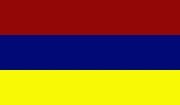
Corps of Royal Electrical and Mechanical Engineers
Adjutant General's Corps
Adjutant General's Corps
The Adjutant General's Corps is a corps in the British Army responsible for many of its general administrative services. As of 2002, the AGC had a staff of 7,000 people...
Staff and Personnel Support Branch (AGC(SPS))
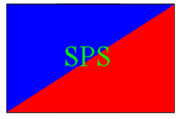
Adjutant General's Corps
Adjutant General's Corps
The Adjutant General's Corps is a corps in the British Army responsible for many of its general administrative services. As of 2002, the AGC had a staff of 7,000 people...
Royal Military Police
Royal Military Police
The Royal Military Police is the corps of the British Army responsible for the policing of service personnel, and for providing a military police presence both in the UK, and whilst service personnel are deployed overseas on operations and exercises.Members of the RMP are generally known as...
(AGC(RMP))

Adjutant General's Corps
Adjutant General's Corps
The Adjutant General's Corps is a corps in the British Army responsible for many of its general administrative services. As of 2002, the AGC had a staff of 7,000 people...
Military Provost Staff
Military Provost Staff Corps
The Military Provost Staff Corps was the corps of the British Army which ran its military prisons. As the Military Provost Staff , the corps is now administratively part of the Adjutant General's Corps. It also provides operational support and technical advice for Prisoner of War handling during...
(AGC(MPS))
Royal Army Veterinary Corps
Royal Army Veterinary Corps
The Royal Army Veterinary Corps is an administrative and operational branch of the British Army responsible for the provision, training and care of animals. It is a small but technically competent corps forming part of the Army Medical Services...
Small Arms School Corps
Small Arms School Corps
The Small Arms School Corps is a small corps of the British Army responsible for maintaining the proficiency of the army in the use of small arms, support weapons and range management.-History:...
Royal Army Dental Corps
Royal Army Dental Corps
The Royal Army Dental Corps is a specialist corps in the British Army that provides dental care services to British Army personnel and their families in war and in peace...
Intelligence Corps
Army Physical Training Corps
Army Physical Training Corps
The Royal Army Physical Training Corps is the British Army corps responsible for physical fitness and physical education. Its members are all Royal Army Physical Training Corps Instructors ....
Queen Alexandra's Royal Army Nursing Corps
Queen Alexandra's Royal Army Nursing Corps
Queen Alexandra's Royal Army Nursing Corps is the nursing branch of the British Army and part of the Army Medical Services....
Corps of Army Music
Corps of Army Music
The Corps of Army Music is a corps of the British Army. It was formed in 1994 as an umbrella organisation, centred on the Royal Military School of Music, to oversee the 29 new permanent Military Bands formed following Options for Change, although each band continues to wear the capbadges and Full...
Royal Yeomanry
Royal Yeomanry
The Royal Yeomanry is an armoured regiment of the Territorial Army consisting of five squadrons and a military band:*A Squadron *B Squadron...
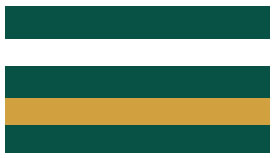
Royal Gibraltar Regiment
Royal Gibraltar Regiment
The Royal Gibraltar Regiment is the home defence unit for the British overseas territory of Gibraltar. It was formed in 1958 from the Gibraltar Defence Force as an infantry unit, with an integrated artillery troop.-Formation:...

The following Regiments do not have a TRF:
- Special Air ServiceSpecial Air ServiceSpecial Air Service or SAS is a corps of the British Army constituted on 31 May 1950. They are part of the United Kingdom Special Forces and have served as a model for the special forces of many other countries all over the world...
- Special Reconnaissance RegimentSpecial Reconnaissance RegimentThe Special Reconnaissance Regiment or SRR is a Special Forces regiment of the British Armed Forces. It was established on 6 April 2005 and is part of the United Kingdom Special Forces under command Director Special Forces, alongside the Special Air Service , Special Boat Service and the Special...
- Honourable Artillery CompanyHonourable Artillery CompanyThe Honourable Artillery Company was incorporated by Royal Charter in 1537 by King Henry VIII. Today it is a Registered Charity whose purpose is to attend to the “better defence of the realm"...
(for historical reasons, their Corps of Drums wear that of the Foot GuardsFoot Guards-British Army:The Foot Guards are the Regular Infantry regiments of the Household Division of the British Army. There have been six regiments of foot guards, five of which still exist. The Royal Guards Reserve Regiment was a reserve formation of the Household Brigade in existence from 1900-1901...
)

